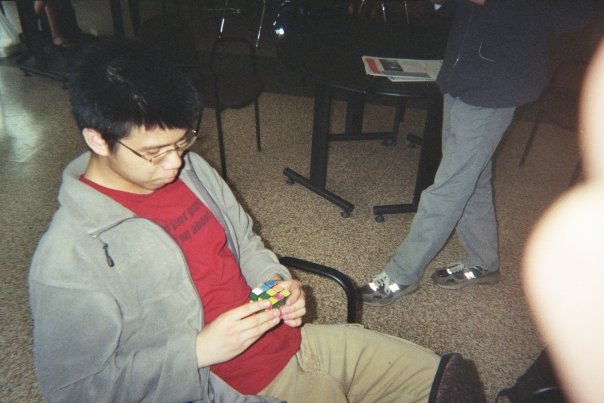
Rubik's Cube
My first experience with the Rubik’s Cube was when I was probably 5 or 6 years old. My parents got me a Rubik’s Cube, and I remember being able to get one side, but then when I tried to get 2 sides at once, which I believed to be the logical next step, I couldn’t quite get it right.
A few years later, in the summer break after 8th grade, I went to summer camp at CTY – the Center for Talented Youth, by Johns Hopkins University. It was located at Siena College in Loudonville, NY. There, I saw someone solve the Rubik’s Cube during a talent show.
It blew my mind. I was so impressed that, as soon as I got back home, I made it my goal to solve the Rubik’s Cube. I managed to figure it out using some primitive tutorials that I found online, and then once I figured it out, I tried to get faster and faster.
From there, I discovered the “sport” of speedcubing. I learned more algorithms – sequences of moves for solving the Rubik’s Cube – and purchased faster equipment to try to decrease my time. I attended official World Cube Association (WCA) competitions to get my times recorded.
Today, I can solve the Rubik’s Cube in about 30 seconds. My “official” personal best in competition is 20.27 seconds for a single solve, and 23.11 seconds for an average of 5 solves. My official WCA profile can be found here. But this was done many years ago, and I’m out of practice, so I usually say that I can solve it in about 30 seconds.
To some people, 30 seconds may sound fast. But the official world record is a little over 3 seconds for a single solve, and about 4.5 seconds for an average of 5 (as of the time of writing this).
Pretty much anyone can solve a Rubik’s Cube if they put their mind to it. It’s more of a memorization and finger dexterity challenge than an intellectual challenge. You simply need to be able to recognize certain patterns on the cube, and then perform a predetermined sequence of moves to alter the state based on the pattern. After doing this enough times, and assuming you don’t mess up, the cube will be solved.
So, it’s a matter of putting in the effort to learn those patterns and algorithms, and once you’ve learned them, you will be able to solve the cube.
There are many resources on the internet for learning how to solve a Rubik’s Cube these days. Simply search “how to solve a Rubik’s Cube” on YouTube, and you’ll find many beginner tutorials. And once you learn how to solve it, you can always try to get faster at it.
Personally, I use the CFOP (cross, first 2 layers, orientation, permutation) method, but I use 2-look OLL because I don’t know all of the OLL algorithms. I do know full PLL, however.
These days, I don’t solve the Rubik’s Cube as much as I once did. I ended up co-founding an e-commerce website for Rubik’s Cube speedcubing gear and accessories in 2011, and I became more occupied with running the business than solving Rubik’s Cubes.
However, I usually have a Rubik’s Cube on my desk at all times, and I carry a Rubik’s Cube with me almost everywhere in my backpack. I still solve it from time to time, out of boredom, or if someone asks about it when I meet them. Surprisingly, I can still remember most of the algorithms, although I might mess one up occasionally.
The Rubik’s Cube is very nostalgic to me. And since I deal with Rubik’s Cubes pretty much every day as part of my job, it has become a big part of my life, even though I’m no longer actively speedcubing anymore.
Created: Sat Jun 01 2024 (Updated Thu Jun 20 2024)
